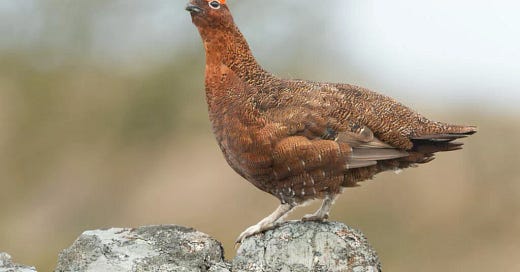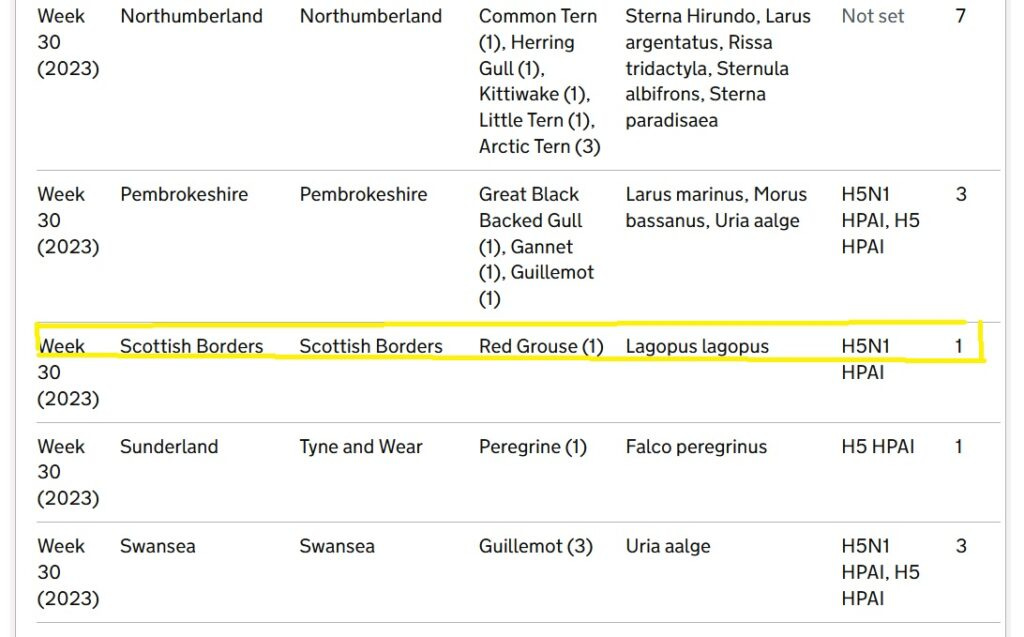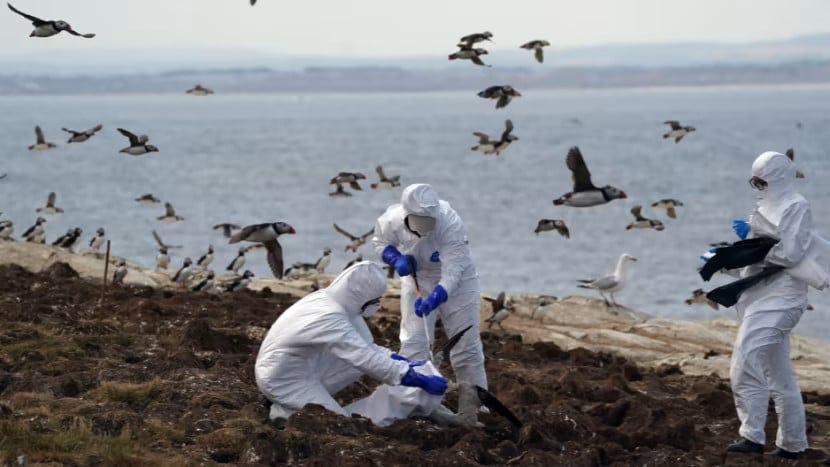The Animal and Plant Health Agency has updated its spreadsheet “Avian Flu in wild birds: 2023‘ to include the news that surely no one wanted to hear: a case of Avian Flu in a Red Grouse.
The details are – to say the least – scant. All that is known is that a Red Grouse somewhere in the Scottish Borders was confirmed to have the Highly Pathogenic Avian Flu H5N1 virus sometime in Week 30 (which is from July 24 – July 30 2023). No more location details are provided and there has been no comment that we can find in the national media.
Avian Flu was first detected in the vast poultry sheds of East Asia. The virus has now spread around the world and may have killed millions of birds. In the last couple of years it has ripped through wild birds here in the UK and has been particularly rife amongst seabirds because they tend to breed in tightly-packed colonies where the virus easily spreads in nasal secretions and excreta.
Red Grouse are of course intensively reared on grouse moors to provide a so-called ‘surplus’ of birds that estates sell to shooters from August 12th – the ‘Inglorious 12th‘ as it has become known.
On some moors ‘stocks’ can be up to ten times the natural density. Contagious diseases like cryptosporidiosis (which causes ‘bulgy eye’) and strongylosis (caused by the strongyl nematode worm) are already a huge issue on intensive grouse moors and caused by over-crowding. Unlike both of these, Avian Flu can’t be controlled by providing huge doses of antibiotics via medicated grit trays. Once it takes hold, it is usually lethal to huge numbers of birds.
Other victims
An outbreak amongst grouse would not just be of concern for the Red Grouse that suffer and die from it. Birds of prey appear to be very susceptible to catching Avian Flu (as the image above shows a Peregrine was also confirmed with Avian Flu in Week 30), presumably from contact with infected carcasses. Moorland birds of prey like Hen Harriers and Golden Eagles are already intensely persecuted by gamekeepers – it would be a disaster if the disease spread through already (illegally) suppressed populations (though perhaps would not be considered as such by moorland shooting estates).
There is also a human element to consider. While infections amongst people have remained very low, that is largely because most members of the public are not coming into contact with infected birds. Most are also aware now that the corpses of birds suspected to be infected should not be handled without appropriate precautions like biohazard suits.
Will the shooting industry be taking precautions to protect its beloved ‘rural communities’, members of which it hires at minimum wage rates to drive Red Grouse towards clients and who are then tasked with picking up the bloodied bodies that result?
There is no way at all the industry will shut down voluntarily (there’s too much money to be made killing birds), but these are after all the people who will be most at risk and as employers estates have a duty of care.
While it should go without saying that no one would want to see any person (or animal) catch this horrible disease, if Avian Flu is found to be spreading – and grouse estates have the data that proves it – their insurance liabilities might end up rocketing.






